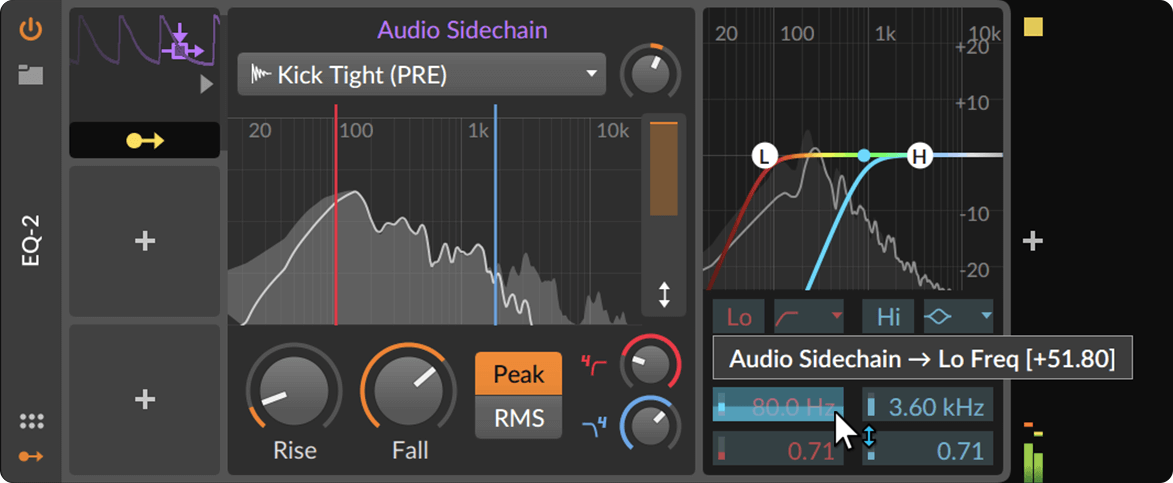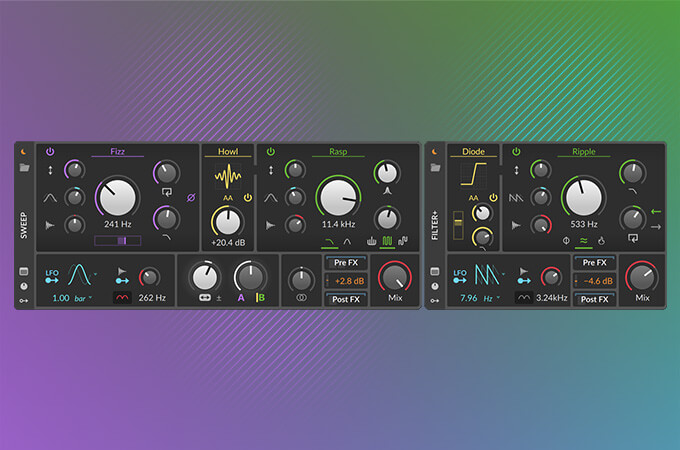Sidechaining Tutorial
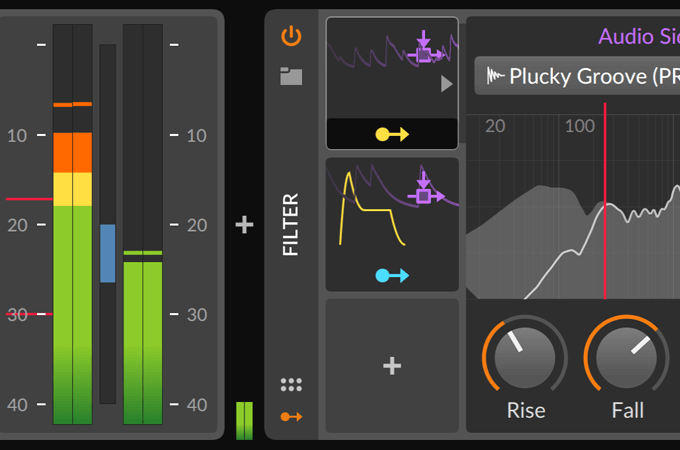
Sidechain routing is a popular technique in audio processing. Basically it lets you shape the dynamics of a signal, utilizing the amplitude of a second signal, which is fed into the sidechain input of a compressor, gate, or similar device.
Common applications of sidechain processing are classic ducking effects, or creating that "pump" effect that makes kickdrums stand out of the mix, as often heard in contemporary dance music.
Follow the steps below to master the art of side-chaining. There's also a tutorial project to help you get started, grab it here:
Sidechaining With Dynamics and Friends
Sidechain routing in Bitwig Studio is very flexible and easy to set up, both in Bitwig’s own devices, and VST plug-ins. Sidechain input is available in these Bitwig devices:
- Dynamics
- Gate
- Transient Control
...as well as in VST plug-ins equipped with sidechain functionality.

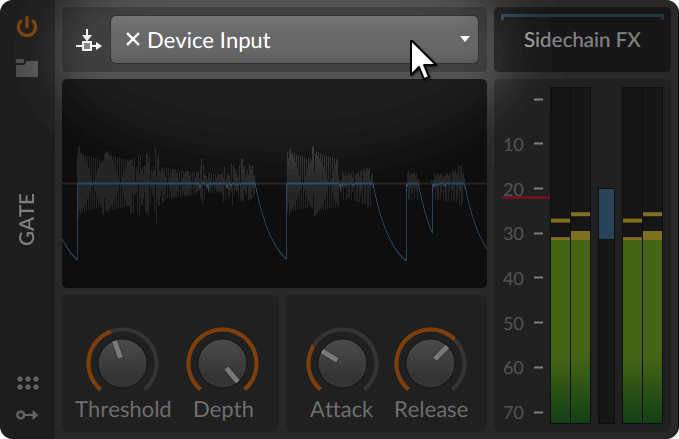
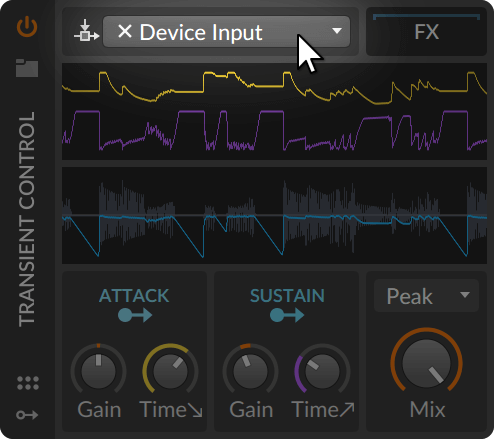
In Bitwig devices, locate the sidechain symbol, and select the source of the sidechain signal using the drop down menu right next to it.
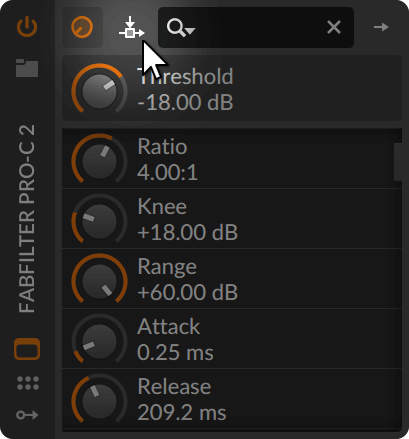
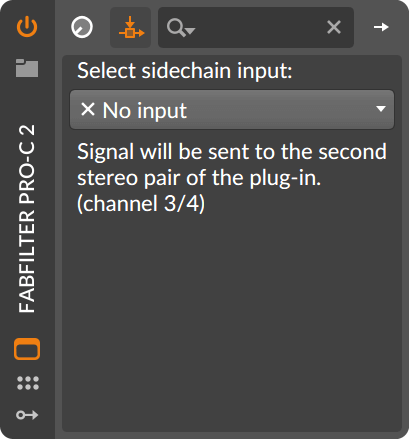
In VST plug-ins, open the sidechain selector by clicking the sidechain icon at the top. Please note, that this option is only available in VSTs equipped with sidechain functionality.

The drop down menu has all tracks of your project selectable PRE or POST their track volume faders:

Alternatively, you can even grab the sidechain signal from individual Drum Machine pads, or any other point within a track’s device chain, following the nested menu structure.

Use the small fader next to the input selector to control the level of the sidechain signal. Optionally, drop additional Audio Effects (most commonly EQ) into the slot labeled Sc FX to process the incoming sidechain signal for even more control.
Tip!
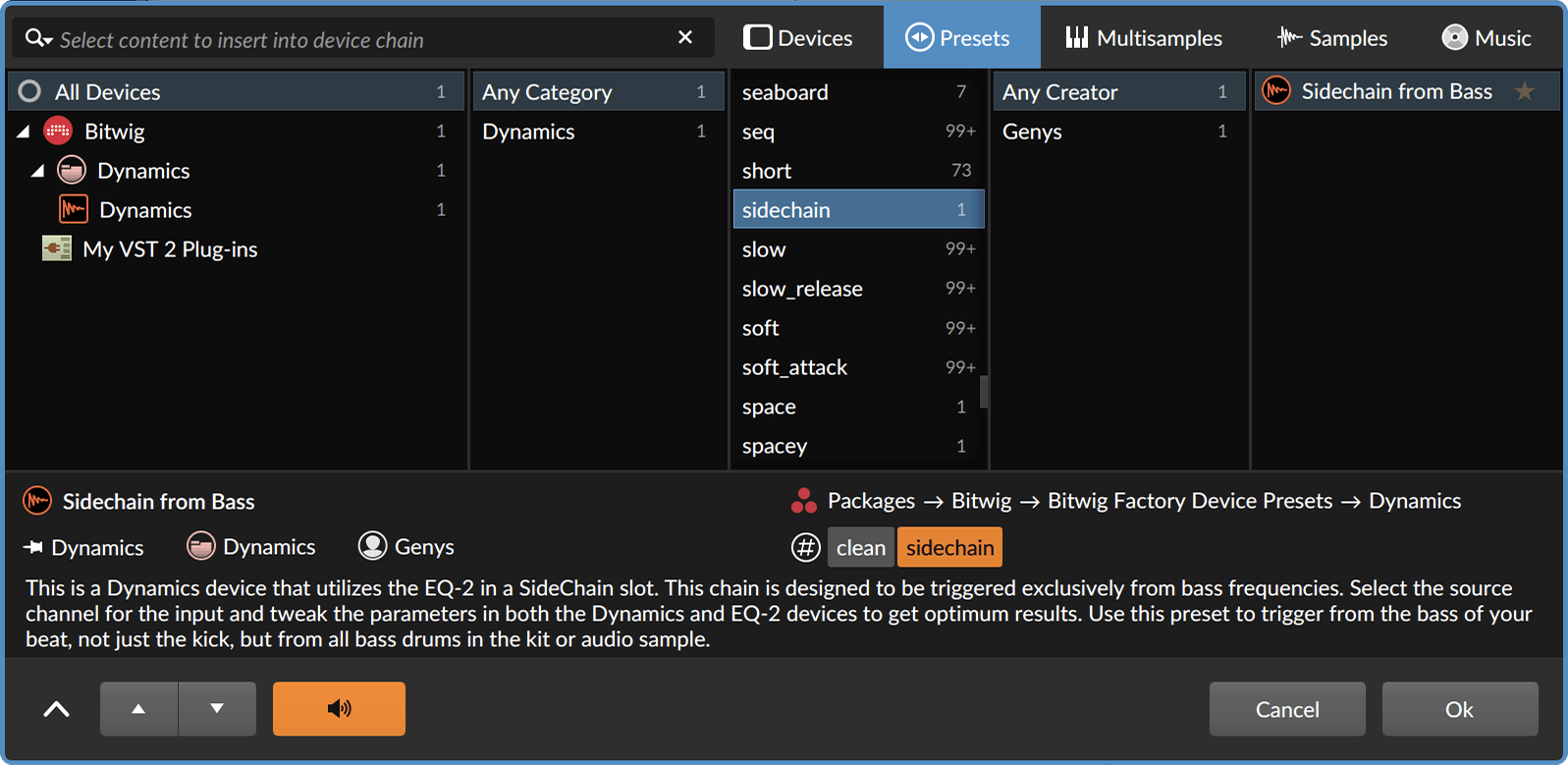
You will find some useful presets for sidechaining applications by browsing the #sidechain tag in the Popup Browser or Browser Panel.
Sidechaining Using Modulators
Using the Modulators for creative side-chaining
Bitwig’s unique Audio Sidechain modulator widely enhances the classic sidechain functionality found in dynamics processors.
Audio Sidechain lets you modulate any parameter within Bitwig devices and VSTs, using the amplitude of any audio signal across your project, as a modulation source.
Example: Clean up the low end of your mix using a modulated filter or EQ. The cutoff frequency of a highpass filter located on your bassline track can be modulated by the amplitude of your kickdrum track, using the Audio Sidechain modulator.
- Place an EQ-2 device onto your bassline track
- Open its Modulators pane and add the Audio Sidechain modulator to an empty Modulator slot.
- Switch the Lo band of the EQ-2 to highpass12 mode, to enable the highpass filter. Then adjust its frequency value to the minimum (20Hz).
- Click on the Audio Sidechain modulator to show its parameters. At the top, select your kickdrum track (or the corresponding Drum Machine pad) as the sidechain source.
- Activate the assign button in the Audio Sidechain modulator. All parameters in the EQ-2 device now turn blue, to indicate they are ready to be assigned to the modulation source.
- Increase the frequency of the highpass filter to assign the modulation, and watch the EQ curve "bounce" along to your kick drum. Adjust the modulation using the level-, frequency-, and envelope settings of the Audio Sidechain modulator.
Result: The kickdrum now triggers the highpass filter on the bassline, in order to avoid overlapping frequencies within these two elements.
Tags:Learn Bitwig Studio
Share this on:

